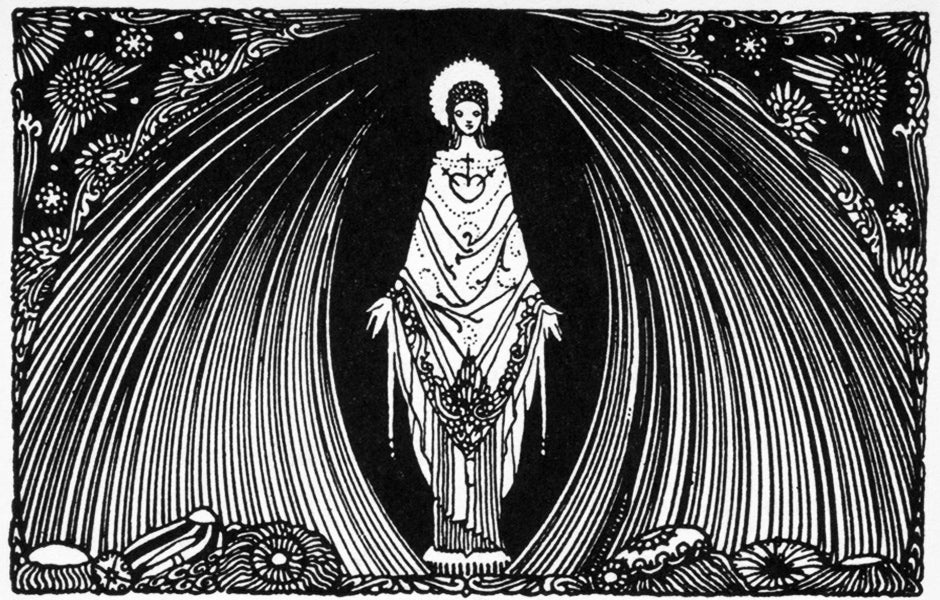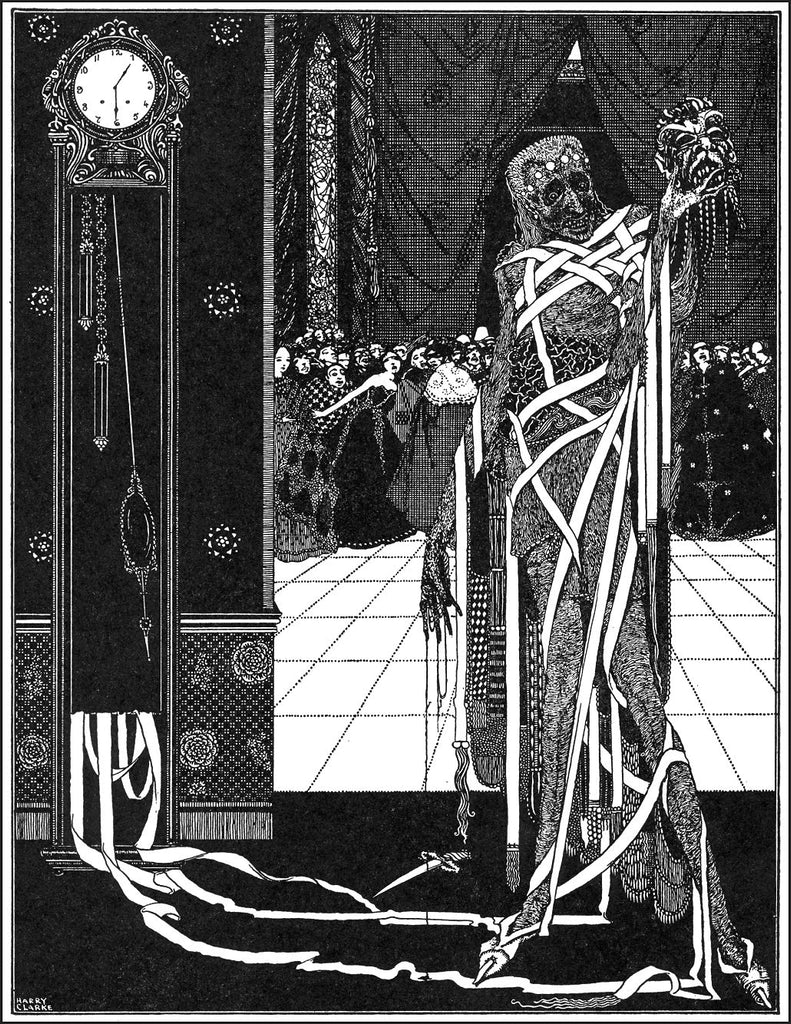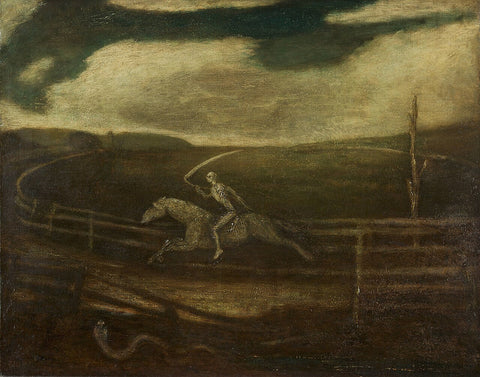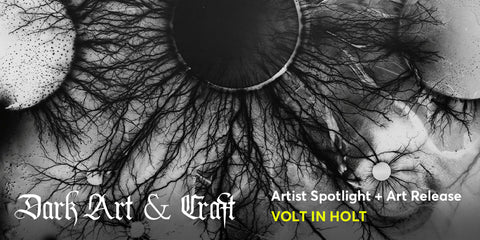Images of Mystery and Imagination: the Illustrated Work of Harry Clarke
The short life of Irish Artist Harry Clarke is a prolific combination of more than 100 stained glass installations and his book illustrations. He's also one of the masters that has paved the way for the dark art movement we know today. His work, in both mediums, was heavily inspired by the French Symbolism and Art Nouveau movements. While often iconized for his prolific blackwork illustrations, Clarke's command of color is where he gained his early notoriety: his color plates for book illustrations and stained glass pieces made him a key player in the Arts and Crafts movement.

Images via https://en.wikipedia.org unless otherwise noted CC 4.0 creative commons
For October's master feature, we wanted to focus on a curated collection of Clarke's work based on his illustrations for one of Edgar Allen Poe's editions of Tales of Mystery and Imagination. It was this collection that really iconized Clarke as an illustration heavy-hitter, aligning him with artists such as Aubrey Beardsley, Gustave Dore, and Edmond Dulac. While it's highly recommended that you read each and every one of these stories in their Poe original goodness, here are three of our favorite Poe tales that Clarke illustrated, available in our online collection.
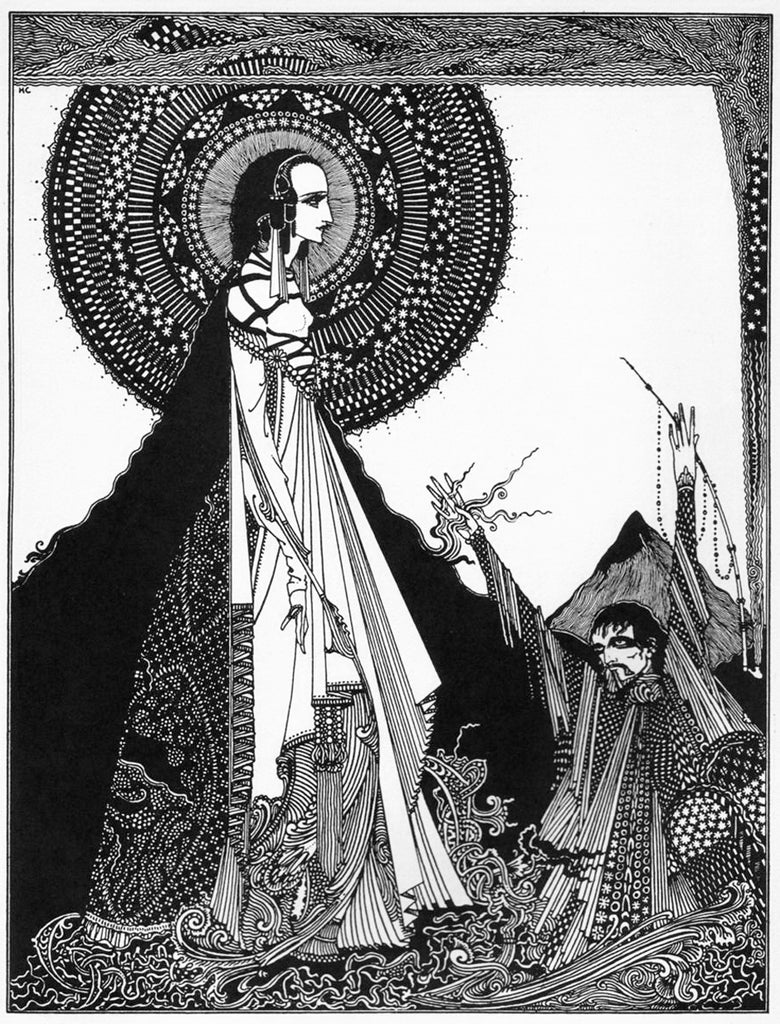
In Ligeia, an unnamed narrator falls in love with the name sake of this tale, a hauntingly "unconventional" raven-haired beauty and incredible knowledge of everything under the sun, but specifically metaphysical/occult subjects. She falls ill and dies. The narrator is overcome with grief, channeling his energy into a refurbishing project and then enters a loveless marriage with a noblewoman named Lady Rowena. She too falls ill, and in a few months dies. She is prepared for burial and as the narrator does an overnight vigil, he notices that her corpse is showing signs of life. He continues to try to revive her all night, and falls exhausted at the first signs of dawn. As the day begins, the corpse once again comes to life, but instead of the expected Lady Rowena, his first wife Ligeia appears.
An illustration by Harry Clarke from Edgar Allan Poe's Tales of 'Mystery and Imagination'
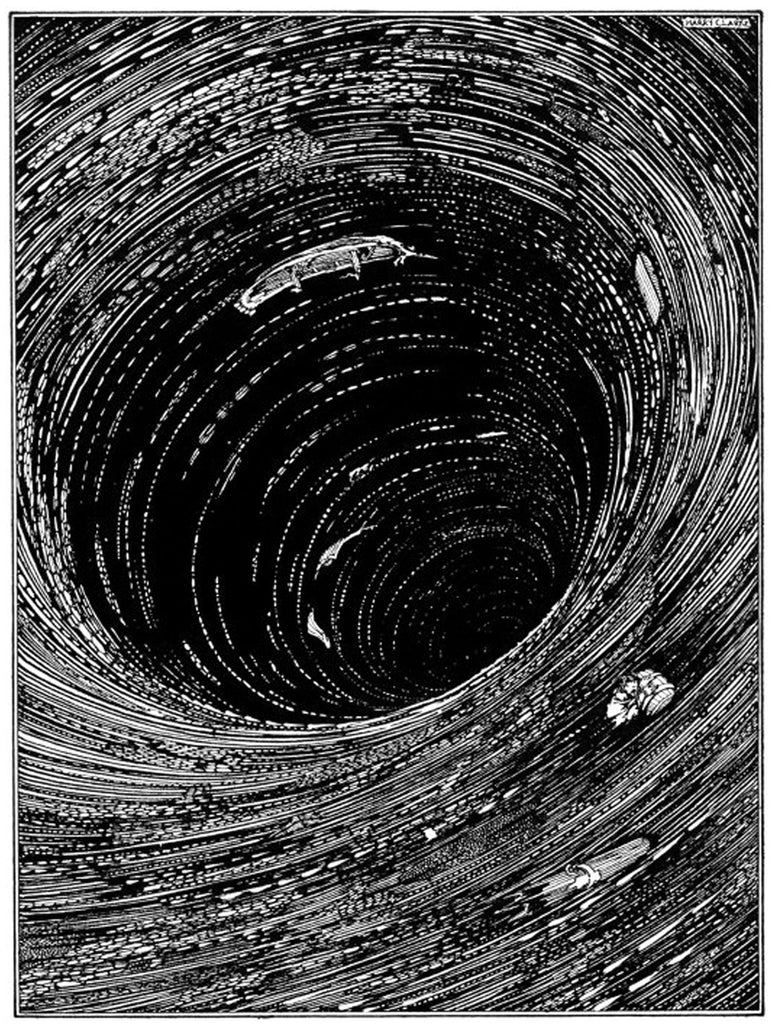
Maelström
A Decent into Maelstrom is the reflection of a prematurely aged old man, who tells the tale of a horrifying hurricane that has aged him past his years. The man was on a fishing trip with his two brothers, when the boat was pulled into a watery whirlpool, drowning his two brothers. Through careful analysis of the vortex and survival strategy, the narrator was able to defy his death sentence and get rescued.

"Deep, deep, and forever, into some ordinary and nameless grave."
Mask of the Red Death

Poe's Tale "Berenice." (1936)
Edgar Allan Poe's "Fall of the House of Usher"
Finally, we find ourselves in the tale of nobleman Prospero in the Masque of the Red Death. The protagonist and one thousand other noble people retreat to an abbey to escape the Red Death, away from the thousands of people suffering outside of their walls. Sequestered in this fortified location, the host puts on a masquerade to entertain the privileged collection of individuals. The abbey has seven rooms decorated in different colors including blue, purple and green. The last room is the most macabre: decorated in black with scarlet light illuminated from its stained glass windows. This final seventh room makes the guests feel unsettled. Every time the clock chimes, the guests stop what they are doing and only begin again when the clock stops tolling. At the toll of midnight, a bloodstained veiled individual appears, appearing as if he is succumbing to the Red Death. Prospero demands to know who this guest is, only to find..that there is no one under the veil, and that despite their best efforts, the guests have been exposed to the disease they fleed from.

Poe's "The Black Cat" (1936)

"Tales of Mystery and Imagination" 1923 small vignette design
Artist Resources
Snag these as prints or merch in our Harry Clarke print collection.

